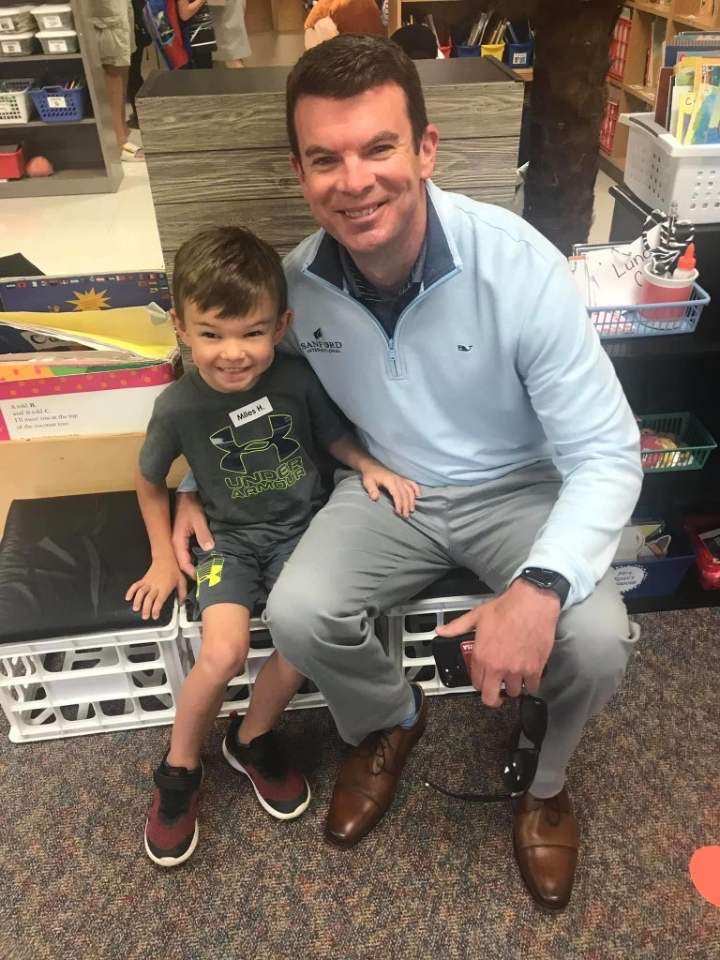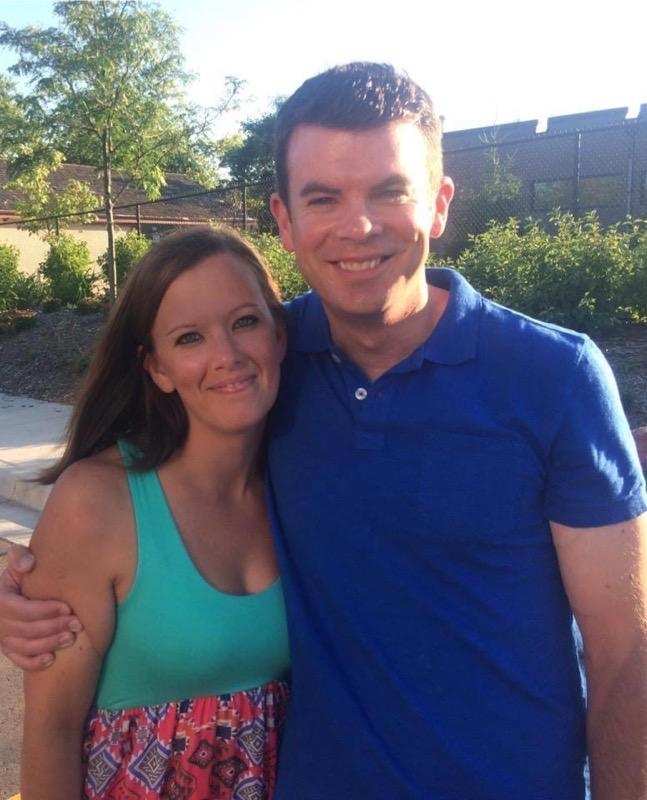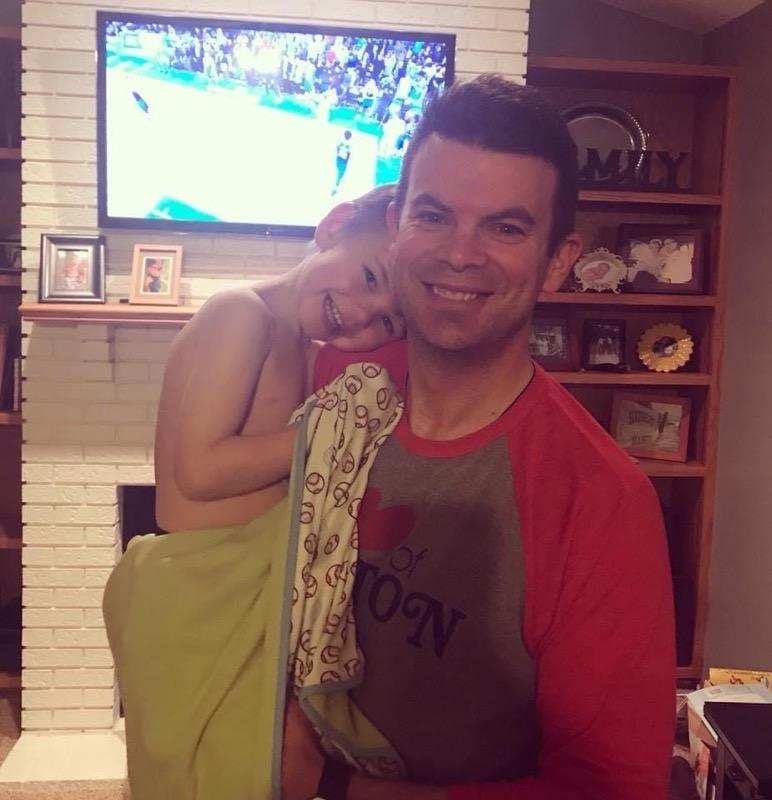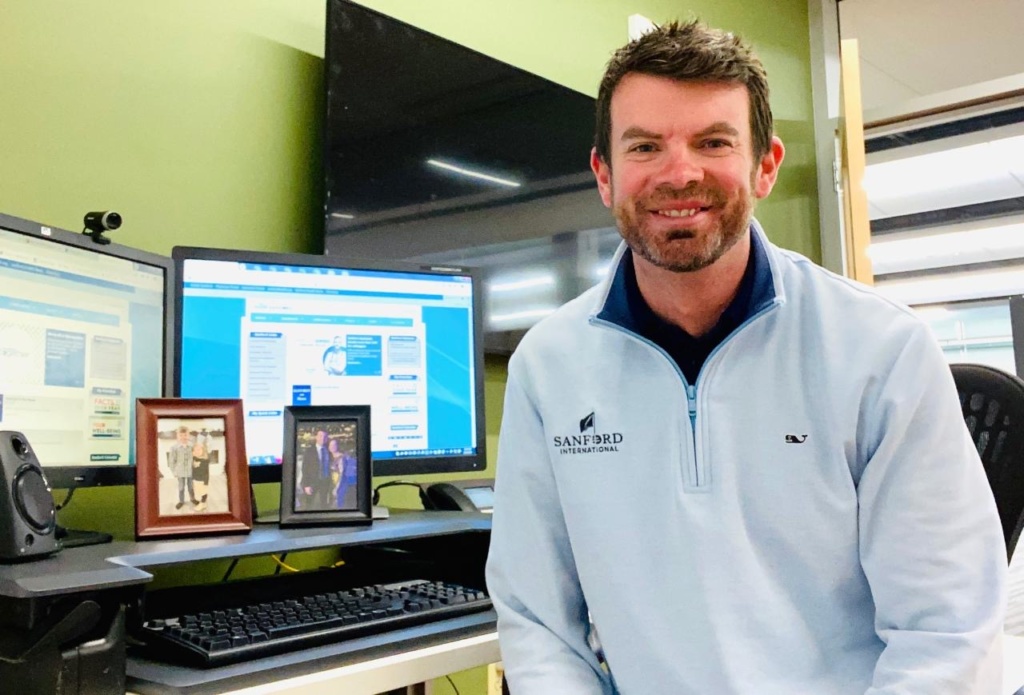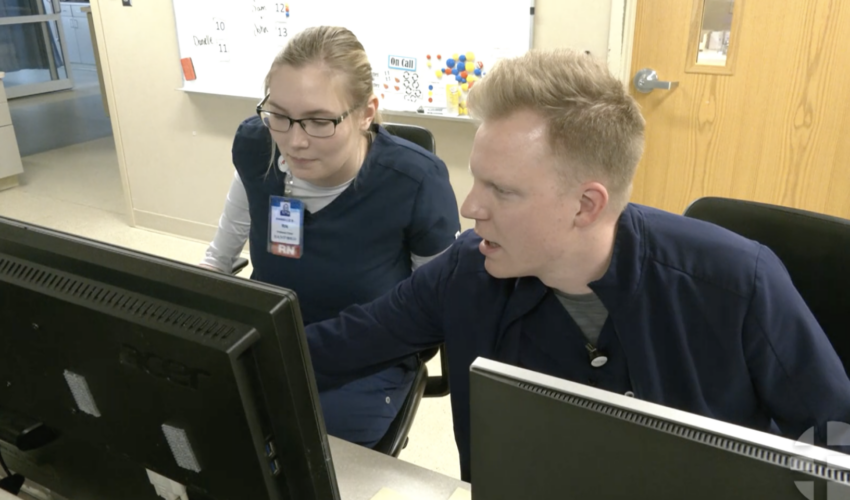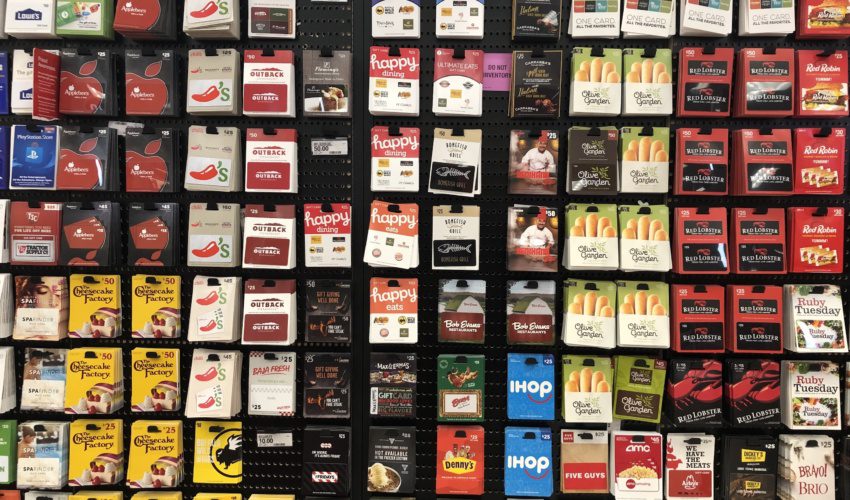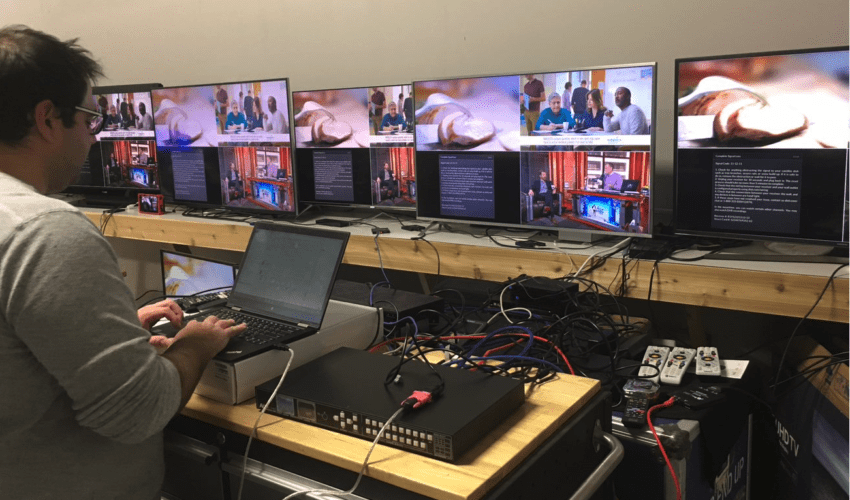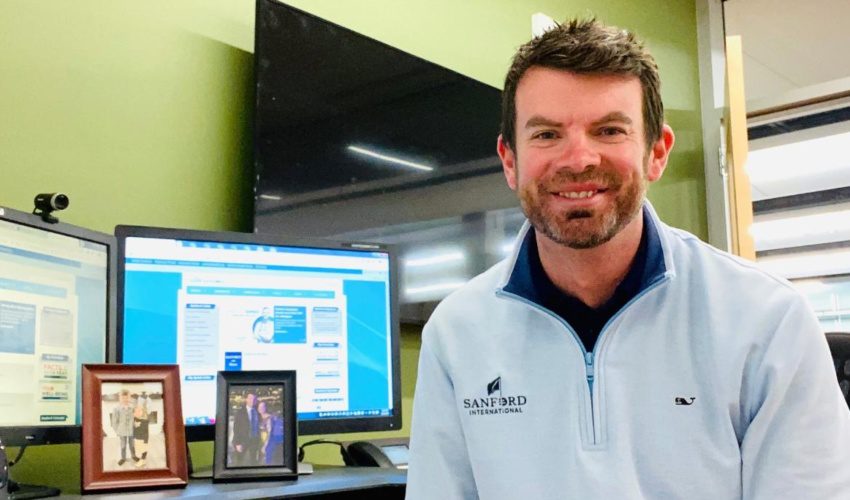Monthlong battle: Sanford employee details struggle with COVID-19
May 4, 2020
Paul Heinert expected the reaction he received when friends and acquaintances began to find out he had tested positive for COVID-19.
“Oh, you’re healthy,” they said. “You’re young. You’re in good shape. You’ll be fine.”
At 37, all those things were true for Heinert, a senior media relations specialist for Sanford Health.
He thought the same thing.
“You’re right. I am. I can fight this,” he said. “And when it doesn’t go away, that’s when doubt starts creeping in a little bit. It’s scary.”
More than one month after testing positive for COVID-19, he’s finally able to safely say he has left the disease mostly behind him. But his experience shows it can be a long, tough road even for someone with what could be considered a “mild” case.
Heinert generally is the one telling other people’s stories. He began his career in broadcast journalism before moving into a media relations role at Sanford. His days before becoming a COVID-19 patient had been spent helping the health system respond to media inquiries and prepare to discuss how it was handling the pandemic.
But he was being cautious. He mostly had been working from his basement. He and his wife, Amy, had taken their 6- and 3-year-old children to visit her parents the week before. He had run to the grocery store for maybe 10 minutes.
“I felt like I was as careful as anybody,” he said. “Your hands are just raw from washing with hot water so much, just was very careful about hand sanitizer, and aside from a couple media shoots that were not anywhere near the hospital, I didn’t go near the hospital. I wasn’t around patients. I wasn’t around anyone who would have maybe had it.”
Or so he thought. On March 27, around 9 p.m., he started feeling a little off. But it was a Friday night at the end of a long week, so he just went to bed.
Then the chills started. He ran a mild fever. But he describes himself feeling like a zombie.
“I couldn’t do anything,” he said. “The kids wanted pancakes. Couldn’t do it. Just sat there and said I needed to lay down. And I think I laid in bed most of the day, and by supper I was kind of coming out of it and felt a little better, at least somewhat normal.”
He woke up Sunday and felt like nothing had happened. He spent all day outside assembling a trampoline for his kids and figured he’d just had a 24-hour touch of something.
“And then Monday, Tuesday, you know when you don’t feel like yourself – a little fatigue, a little headache – and I don’t know what it was Tuesday night that made me do it, but the previous week I had been around a lot of prominent people, and I was probably more concerned if I have this to make sure I’m not spreading it to anybody,” he said.
He logged into his Sanford patient account, plugged in his symptoms through an e-visit, and within a half-hour had a message back.
“Based on your symptoms, we’re going to order you a test, and we want you to go in right away the next morning to get tested,” it said.
He had a tough time sleeping that night, he said.
The next day, he went to a drive-thru testing service where he was seen right away “and got the nasal swab, and it was as painful as people say,” he said. “And I drove home and let the rest of my Sanford team know, and I just spent the rest of the day in bed. I didn’t feel terrible. I didn’t feel great. But I didn’t feel terrible.”
The next morning, the first thing he read was an email that arrives weekly and is spiritual in nature. The message, in retrospect, was prophetic, he said.
“It just said, ‘Do not be afraid. God is with you.’ And that was the very first thing I saw that morning, and within a couple minutes I got the call that said, ‘Hey Paul, your test came back, and it’s positive.’ So I was not shocked and not scared but just like, OK, if this what it’s going to be like, I’m going to be OK.”
It turned out, the journey was just beginning.
Household quarantine
Within a couple of days, Heinert’s wife, Amy, started to feel sick. Her test also came back positive. He had been quarantined in the basement, but with two kids, he came upstairs to help.
“She got pretty sick for a couple days, but she’s obviously a lot tougher than I am because in about a week she was back to 100 percent,” he said. “She had heavy nausea, headache and fatigue, and it all kind of came at once. She had two to three days when she was pretty sick, but after that, she felt pretty good.”
He wasn’t as fortunate. After starting with muscle aches and fatigue, Heinert’s COVID-19 case progressed to “close to migraine-level headaches,” he said. “And it was like, I can handle that, but then you start getting the chest tightness and some of the dry cough, and that’s what got me nervous. It was just like a different symptom all the time. At that point, I was laying in bed and didn’t want to get up. And I prayed and prayed a lot. And there were nights that was about the only way I could fall asleep.”
He prayed to feel better, but he also prayed for knowledge he could use to help himself recover.
“And I’m not kidding you, the day after, I happened to be on Twitter, which I had quit for a while because I couldn’t take all the bad stories. And I saw one of (CNN anchor and COVID-19 patient) Chris Cuomo’s videos he had posted, advice he got from his doctor. And it was that you cannot just sit in bed all day and this will get better. If you can get up, you have to get up. You have to fight it.”
So he got up. He started doing breathing exercises, stretching and walking around the backyard.
“And I felt a little better,” he said. “So I put a mask on and started walking around the neighborhood. You get a mile in a day and feel so much better, and it was getting nicer, and I was just feeling good about myself and where I was at.”
But he was careful not to declare victory. When asked how he was doing, he usually just said, “I’m not great, but OK.”
Two weeks into it, though, he had two good days in a row and told his co-workers he thought it was behind him.
“And the next day, I woke up, and it was like I was back to square one,” he said. “And that’s the mental part. That’s what really sinks you. You think you beat this, and it’s like, not so fast. And at that point, my only symptoms were a headache at night and chest tightness, and that was the scariest thing. Are my lungs filling up with fluid and I don’t know it?”
He did a video visit with his doctor, who assured him because of the amount of walking he could do, his lungs likely were OK but recovering.
“It’s more like they’ve been sunburned or bruised, and it will take a bit to heal,” he said.
Three weeks into it, he felt well enough to begin tackling some work calls and emails from home. And then came another curveball.
“I got the absolute worst anxiety panic attack,” he said. “This was a two-, 2.5-day panic attack. It was probably a lot of things. But once again, I couldn’t get out of bed. And it wasn’t COVID symptoms. I felt fine. But it was like my heart was going to come out of my chest.”
Maybe it was dwelling on long-term effects, some stress related to easing back into work or an overload of information on news and social media, but those two days were almost as bad as the three weeks before, he said.
“You felt helpless,” he said. “That mental aspect is so, so real and so scary. It’s a real thing.”
Coping at home
Because he and his wife couldn’t be around other people, they relied on friends and co-workers.
“My team from Sanford had Hy-Vee deliver a massive amount of groceries to our front door, and that was such a boost. It was wonderful and appreciated, and it lasted a long time,” he said. “Other good friends dropped off a few things on the porch, even some stuff for the kids to do and extra Tylenol and Gatorade. When you’re done, you realize how incredibly lucky you are to have the best family and friends, and you realize just how many wonderful people you have in your life.”
His home remedies consisted of eating “more fruit in the last four weeks than the last four years,” with a diet of apples, bananas and berries, though he didn’t have much of an appetite.
He drank a lot of water, Gatorade and mint tea.
He took a hot shower or bath twice daily.
He took Tylenol and exercised as much as he could.
He estimates he lost 12 to 15 pounds and has gained about half of it back.
While friends guessed he spent most of his COVID recovery binge-watching TV, that wasn’t the case. He listened to some podcasts and tried to watch some humorous shows to take his mind off it. He’s grateful that if his kids were infected, they never showed symptoms.
“My symptoms, I’m sure, are considered mild. I’m very lucky,” he said. “I don’t want people to think I was in the hospital or on a ventilator. But aside from how long it took me to get over it, it was common symptoms. I just seemed to get them all at various points.”
Back to ‘normal’
Today, five weeks after his symptoms started, Heinert made his first visit back to his office.
“I just wanted to come in for a couple hours to get a little sense of normalcy and see people who were so supportive while I was gone,” he said. “The symptoms are pretty much gone, but that anxiety and mental aspect is a real thing, and that’s something you just can’t escape because it’s everywhere.”
He urges others struggling with that aspect of the disease “to talk about it,” he said. “That’s certainly helped me in the last week, just to get it out and talk about what it was and why I had such anxiety. My COVID symptoms are gone, but that lasting effect is going to be here a little bit. And if you have faith, have faith you’re going to be OK. I know a lot of people were praying for me, and I felt it, and I’m so thankful for that.”
He urges others to consider signing up for Sanford’s home-based care, which has rolled out further for COVID patients since he had it. That allows patients to regularly update their symptoms while they are reviewed remotely by a care team, and it provides a pulse oximeter to monitor oxygen levels.
“That would have lessened my anxiety,” he said. “Don’t assume that you can’t get it (the coronavirus), and if you do get it that even if you’re in those young, healthy categories that it’s going to be an easy road. Because sometimes it’s not. Make good choices as we start to reopen and get things back to normal. And don’t be afraid to call your doctor. I saw people who were afraid to call their doctor because they didn’t think they were bad enough, and it got worse. Don’t rush in. If you’ve got symptoms, don’t go there, but call your doctor and let them know your symptoms, and they will get a plan for you.”

